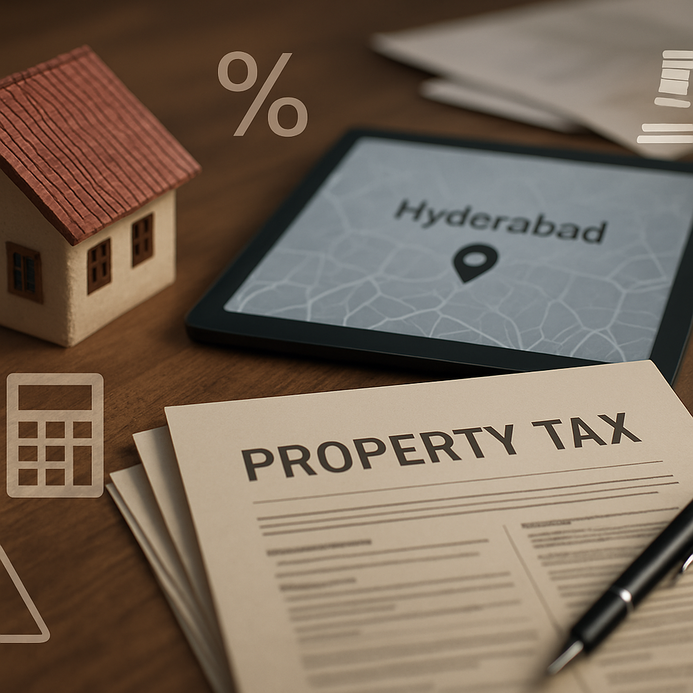Land Patta Format Explained: A Simple Guide to Its History and Importance
- 1 The Roots of ‘Patta’ Land: A Historical Overview
- 2 Understanding ‘Patta’ Certificates: What They Represent Today
- 3 Differentiating ‘Patta’ from Other Land Types: A Comparative Analysis
- 4 The Legal Standing of ‘Patta’ Land in Today’s Real Estate Market
- 5 Navigating the ‘Land Patta Format’: Essential Guides for Buyers and Sellers
- 6 FAQ
The Roots of ‘Patta’ Land: A Historical Overview
Let’s talk about ‘Patta’ land, it’s got some deep roots in Telangana, dating back to the Nizam’s reign. Back then, the idea was to sort out land ownership. You see, the Patta system wasn’t just a bureaucratic move; it aimed to streamline how land was distributed, especially for farming. Under the Nizam, collecting land revenue was crucial for governance. With a Patta, farmers could actually claim legal ownership of the land they worked on.
This system turned informal agreements, whispers and handshakes into official titles, which, let’s be honest, made a big difference. It helped farmers sleep better at night knowing their rights were recognized.
Lasting Impact on Property Titles
Today, the influence of ‘Patta’ land is pretty significant, especially when you look at property ownership. The land patta format, you could say, is a critical document. It not only shows who owns what but also tells a story about the governance of yesteryears. Modern transactions in Telangana pretty much hinge on having a patta, and this goes for everything from farmland to urban properties.
Historical Context and Changes
Time’s changes have shaped what ‘Patta’ means. Initially, it was all about safeguarding agricultural land, but eventually, it crossed over into urban areas, too. States like Tamil Nadu treat Patta just as seriously, it’s all kind of interconnected.
| Historical Aspect | Description |
| Era of Nizam | Land ownership formalized with Patta titles |
| Purpose | Cut down disputes and boost revenue collection |
| Current Relevance | Vital in today’s property transactions |
Curious about Patta’s evolution? Check out this detailed overview [Source]. It’ll give you a clearer view of today’s property regulations, it’s really important for anyone dealing with land in Telangana or Tamil Nadu. If you want specifics on how to apply for your own Patta, head over to [Patta Chitta: Tamil Nadu Land Records]. There are also helpful definitions in this [Source].
For a deeper dive into property concerns, why not read our piece on [Adverse Possession Law]?
Understanding ‘Patta’ Certificates: What They Represent Today
A ‘Patta’ certificate is kinda like your golden ticket in property transactions, it’s especially crucial in states like Telangana and Tamil Nadu. This document proves who actually owns the land. It’s not just a piece of paper; it’s a vital legal instrument, whether you’re buying, selling, or even passing down property. Usually, some local authority is responsible for issuing it, making sure the holder’s rights are legit.
In today’s world, having a land patta is essential. It’s like having a legal safety net. You get details like where the property is located, its size, and your name on it. When buyers are looking for land, they’ll definitely want to see this document first – no Patta, no deal.
Also, if someone passes away, the Patta makes transferring ownership to heirs way simpler. It’s also key for securing loans if you’re using the land as collateral.
| Transaction Type | Importance of Patta |
| Buying Property | Confirms legal ownership and clear title |
| Selling Property | Necessary for demonstrating ownership during sale |
| Inheriting Property | Helps simplify transfer of ownership to heirs |
| Applying for Loans | Serves as collateral to secure financing through banks |
In Tamil Nadu, you’ll come across a similar document called Patta Chitta. It’s just as important for land records and can often be accessed online via the Patta Chitta Portal.
Property owners really should check their Patta status now and then, keeping it updated can save a lot of headaches down the line.
Want to learn more about property documentation in Telangana? Consider exploring our articles on [Partition Deeds] and [Relinquishment Deeds].
Differentiating ‘Patta’ from Other Land Types: A Comparative Analysis
When diving into Indian land ownership, it’s essential to understand what sets ‘Patta’ land apart from others like ‘Inam’ land. So what’s the deal? Well, ‘Patta’ is a land title document that affirms ownership, especially in agriculture. ‘Inam’, on the other hand, usually means the government grants land for specific purposes, often with less security.
| Land Type | Ownership Rights | Application Process | Legal Implications |
| Patta | Secure ownership; recognized by law. | Application to local authorities needed. | Transferable; valid title unless challenged. |
| Inam | Conditional ownership; compliance required. | Eligibility and purpose must be proven. | Revocable by government; less secure than Patta. |
Since ‘Patta’ grants real ownership rights, it’s a lot easier to sell or transfer. In contrast, ‘Inam’ lands can be tricky due to government-imposed conditions. This can factor in heavily during property transactions, having a Patta typically means fewer risks and clearer titles.
For homeowners in Tamil Nadu, that Patta document is crucial for accessing land records and applying for loans, significantly affecting property values. Interested in more about Patta in Tamil Nadu? Check out [Source]. Learn more about the importance of Patta Chitta by reading this article [Source].
Knowing the differences in land types is key for real estate investment. It helps ensure security and clarity when it comes to property rights, especially navigating India’s land complexities. For more info, check out our articles on [Land Ownership Rights] and [Land Registration Processes].
The Legal Standing of ‘Patta’ Land in Today’s Real Estate Market
The legal status of ‘Patta’ land really shapes the real estate scene in Telangana. A ‘Patta’ is more than a document; it’s the backbone of property rights for landowners today. In a fast-changing market, the land patta format is key to validating ownership, letting landowners like you prove your rights over what you own.
Why does this matter? Because getting a Patta title provides necessary legal support for property claims. But make no mistake, local regulations dictate how you obtain and verify one. Whether it’s agricultural land or residential areas, things can differ.
To get or confirm a ‘Patta’, you’ll likely need to go through specific requirements like examining ownership history and official surveys. Here’s a rundown of key aspects about obtaining and maintaining a ‘Patta’:
| Aspect | Description |
| Type of Application | Online and offline methods available |
| Documentation Needed | Identity proof, previous land documents, surveys |
| Validating Ownership | Conducting land surveys and verifying records |
| Importance of Patta | Legal evidence for claiming land rights |
| Registration Authority | Local revenue office (or equivalent) |
In Tamil Nadu, the ‘Patta’ concept works similarly, impacting rights and land ownership documents. The ‘Patta Chitta’ merges ownership data and survey details, simplifying things for homeowners down south.
Getting a grip on the land patta format is super important for buyers and investors today. It helps ensure lawful ownership, aids in securing financing, and keeps future disputes at bay. With the surge in real estate interest in Hyderabad, people are paying closer attention to ensuring their ‘Patta’ is legit, and in line with local laws to protect their investments.
If you’re looking for a guide on accessing Patta Chitta and understanding its implications in Tamil Nadu, take a look at this article: [Source: Patta Chitta Tamil Nadu land registrar record portal]. For a broader perspective on ‘Patta’ as a land deed, you might want to check out [Source].
Don’t forget, whether you’re an investor or a buyer, doing your homework on Patta documentation is essential. Dig into reliable sources and get a grip on the nuances of property laws. For additional info, check our insights on [Relinquishment Deeds] and [Partition Deeds].
If you’re diving into property transactions in Telangana, getting a ‘Patta’ certificate is mission-critical. Let’s break down the essential steps to navigate the ‘land patta format’ so both buyers and sellers can avoid any hiccups.
How to Acquire a ‘Patta’ Certificate
1. Eligibility Check: Confirm that the land qualifies for a ‘Patta’. Generally, this covers agricultural lands and certain non-agricultural ones.
2. Documents in Order: Gather your paperwork. This includes:
– Proof of ownership (like a Sale Deed)
– Land survey documents
– Identification
– Latest Khata extract from local offices.
3. Submitting the Application: Fill out the application, either in person at the local Tahsildar’s office or via online channels. Make sure to have all your supporting documents ready. Don’t mess up the ‘land patta format’; it can cause delays.
4. Wait it Out: Typically, the Tahsildar will take about 30 days to process your application. Keep an eye on the status with the reference numbers you get at submission.
Verifying ‘Patta’ Authenticity
To ensure your ‘Patta’ is the real deal:
– Double-check with your local revenue department.
– Verify the details against land records online.
– If needed, get help from a land surveyor who knows Telugu land records inside out.
Conducting Secure Transactions
1. Title Search: Always check the title history of the property. Use online resources or consult a legal expert for a thorough review.
2. Drafting a Sale Agreement: Create a clear sale agreement that lays out all the terms, including payment schedules. Get it right!
3. Payment Methods: Use bank transactions or cheques for transparency. Seriously, avoid cash payments—they can lead to disputes.
4. Registering the Property: After the sale, make sure to register the property with the Sub-Registrar’s office. This guarantees its legality.
5. Post-Transaction Rights: Don’t forget to transfer title documents to the new owner and update the land records to reflect the change.
Looking for more info on land formats and procedures? Dive into resources like the Patta Chitta Tamil Nadu online land registrar record portal or check Wikipedia on Patta. For other related matters or guidance on land transactions, take a look at our articles on [Relinquishment Deeds] and [Partition Deeds].
FAQ
What is ‘Patta’ land?
‘Patta’ land refers to land for which a legally recognized title is provided, confirming ownership. It is particularly important in agricultural contexts and for property transactions in states like Telangana and Tamil Nadu.
How do I apply for a ‘Patta’ certificate?
To apply for a ‘Patta’ certificate, you must check eligibility, gather necessary documentation, and submit an application to the local Tahsildar’s office—either in person or online.
What is the difference between ‘Patta’ and ‘Inam’ land?
‘Patta’ land offers secure ownership rights and is recognized by law, while ‘Inam’ land is usually granted for specific purposes and may have revocable conditions imposed by the government.
Why is it important to verify ‘Patta’ authenticity?
Verifying the authenticity of a ‘Patta’ is crucial to confirm legal ownership and to avoid future disputes during transactions.
How is a ‘Patta’ used in property transactions?
A ‘Patta’ serves as vital documentation for demonstrating ownership during buying, selling, or inheriting property, as well as for securing loans based on land collateral.













